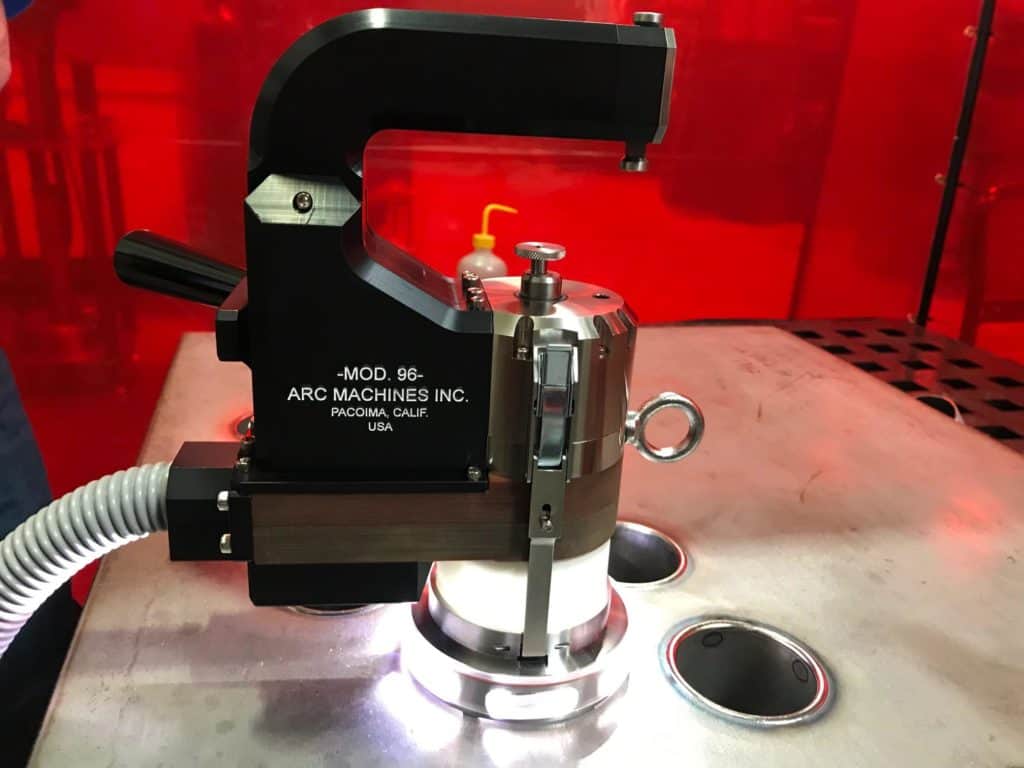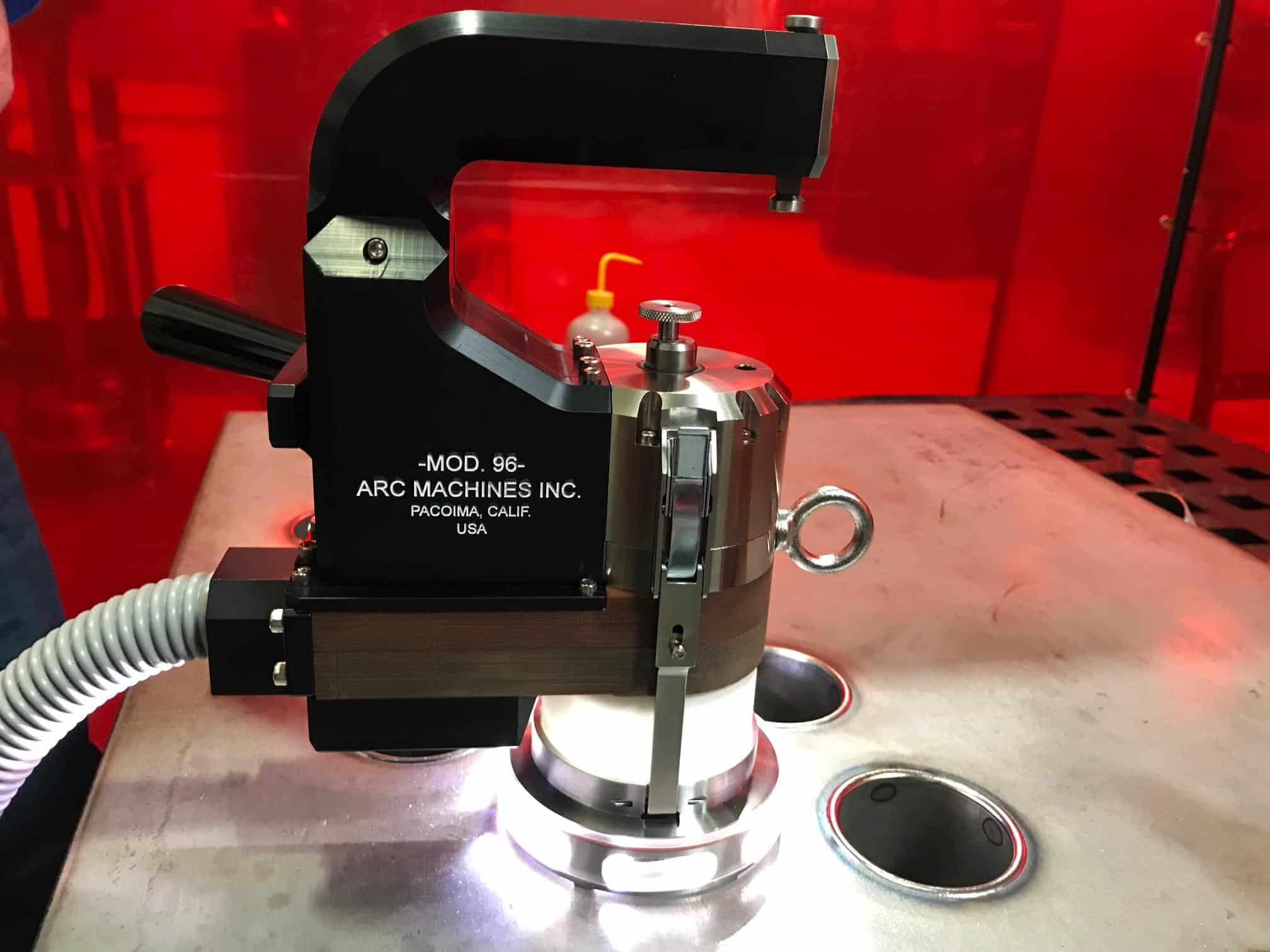
Having choices doesn’t necessarily make things easier, and that is certainly the case when it comes to choosing a joint type for a tube-to-tubesheet welding project. Of course, the type of use—heat exchanger, pressure vessel, or boiler—and the fluids being processed factor into the choice. Tube material, corrosion resistance, tubesheet thickness, and tubesheet geometry are also key factors when picking a tube-to-tubesheet welding type.
Design engineers should also take into account the Tubular Exchanger Manufacturers Association (TEMA) standards or American Society of Mechanical Engineers (ASME) VIII-1 UW-20 specifications. Once the type of tubesheet joint is chosen, a consistent, quality automated welding process is required to create the dozens to hundreds of tubesheet joints that are critical to safe and efficient operation of the final product. We’ll evaluate the most common tube-to-tubesheet welding types in light of the variables and standards that influence the decision process.
Evaluating Tube-to-Tubesheet Welding Types
Design engineers have basically two weld options for a tube-to-tubesheet joint: 1) roll or expand (with grooves milled in tube holes) and seal welded, or, 2) strength welds (no grooves required). Each type of joint has advantages and disadvantages; regardless of which type you choose, it’s crucial to use a welding technique that achieves consistent quality.
Roll or Expand and Seal Weld
Tubesheet joints with roll or expand and seal welds require one or more grooves to be milled into each of the tubesheet holes. Milling tube hole grooves adds to the manufacturing cost. Expansion of the tube into the tube hole grooves via hydraulic, explosive, or mechanical methods adds another step to the manufacturing process. Once the tube has been expanded, it is then welded around the outer diameter of the tube at the tubesheet. The combination of tube expansion and seal weld achieves the required mechanical strength at the joint.
Note that there are differing opinions regarding the proper assembly sequence. The argument for expanding first and then performing the weld is to eliminate the risk of cracking the seal weld as a result of the expansion process. The “weld first, then expand” philosophy argues that the heat introduced by welding after expansion could loosen the joint.
Advantages of Expand and Seal Welds:
- Common, accepted practice for many industry applications
- Good leak resistance when pressure and stresses are not too high
Disadvantages of Expand and Seal Welds:
- Extra manufacturing steps (groove milling, tube expansion) and costs
- Difficult tube replacement or repair (requires relining, removing, or sealing the tubes)
- Requires consistency in expansions and welding—this can be verified by non-destructive testing
Strength Weld
A strength weld, as defined by ASME VIII-1 UW-20, is one in which design strength is equal to or greater than maximum allowable axial tube strength. Strength welds rely solely on the quality and consistency of the welding process.
Advantages of Strength Welds:
- Fewer manufacturing/fabrication steps (no need to machine grooves in tube holes)
- Maximum leak resistance is achieved with a two-pass weld process
- Handles high mechanical and thermal stress conditions where leakage is unacceptable
Disadvantages of Strength Welds:
- Leak-proof seal is solely dependent on weld quality
- Longer welding time if two-pass welds are required
- Difficult tube replacement or repair (requires relining, removing, or sealing the tubes)
Efficiency and Consistency in Tube-to-Tubesheet Welding
Regardless of the type of tube-to-tubesheet joint you choose, the welding method you employ is perhaps the most critical part of the process. When dozens to hundreds of tube-to-tubesheet welds must be performed, process efficiency and weld quality become major factors affecting manufacturing costs. Modern orbital welding solutions meet a range of tube-to-tubesheet welding needs including expand and seal welds and strength welds for a variety of tube materials and diameters, and can perform both autogenous welding and welding with filler wire. A high-quality orbital welding solution includes the following features and capabilities:
- Easily configured weld heads that match common tube sheet designs such as projected or recessed tubes welded with filler wire or flush joints welded without filler wire.
- Unlimited torch rotation, which enables the weld head to make multiple passes without stopping.
- Spring-loaded torches for fillet welds, which exactly track tube shape to accommodate any minor ovality.
- A chill follower located inside the tube being welded, which stays in contact with the tube wall opposite the electrode to minimize the risk of burn-through on thin-wall tubes.
- A completely enclosed purge chamber that provides superior shielding for materials that oxidize easily.
- Cooling units that circulate water through the cables and the torch to facilitate prolonged, continuous welding operations.
- Single-button mandrel activation, which holds the weld head firmly to the tubesheet and precisely positions the torch concentric to the tube to be welded.
- Spare locating fixtures that allow rapid setup and reduce the time required between welds.
For high-volume tube-to-tubesheet welding operations that are part of a manufacturing process, customized orbital welding systems, including robotic based systems, can further improve efficiency while delivering consistent, quality welds in unique welding environments.
All Tube-to-Tubesheet Welding Types Demand Quality
Ultimately, the tube-to-tubesheet welding type selected for any particular fabrication process will be the responsibility of the project’s design engineers. No matter what tube-to-tubesheet joint is used, you should be confident that your orbital welding solution has the versatility to address all required tube-to-tubesheet welding types and complete high-quality welds with efficiency and consistency.
With decades of experience, Arc Machines, Inc. has the people, products, and engineering services to meet a wide range of tube-to-tubesheet welding needs. For inquiries regarding products, contact sales@arcmachines.com. For service inquiries, contact service@arcmachines.com. Arc Machines welcomes the opportunity to discuss your specific needs. Contact us to arrange a meeting.





